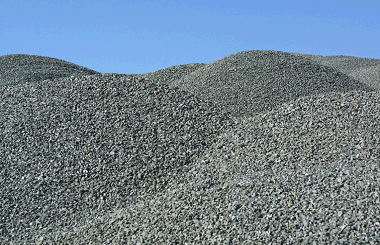|
|
|
 |
 |  |
 |  |
 |  |
UNDERSTANDING VOLUME MEASURES
Volume measures are published as performance indicators of the mining industry in Mining Indicators, Australia (cat. 8417.0), Balance of Payments and International Investment Position, Australia (cat. no. 5302.0) and similar ABS publications. This article explains what volume measures are, how volume measures are produced and who uses volume measures. |  |
 |  |
 |  |
 |  |
What are volume measures?
Millions of economic transactions take place every day involving the production or consumption of goods and services. The monetary (or current price) values of each of these transactions comprise two components: quantity and prices. When a current price value is compared over time, the difference in value can be driven by changes in quantities (ie. physical volumes of a commodity) and/or changes in prices (ie. inflation or deflation). In the current price value, the price and quantity can both fluctuate and this is normally referred to as the 'nominal' value of goods and services. Volume measures are produced by removing the effects of price changes from the current price values as a means to measure the quantity changes in the production or consumption of goods and services over time. The movements in the volume measures are estimates of 'real' growth over time. For example, let us suppose exports of coal are valued at $1000 in period 1 and at $1800 in period 2. Let us also say that the price of coal doubles in this time. The monetary value (or current price value) of coal exports has increased by 80%. However, if prices had not changed the dollar value in the second period would have been $900. Therefore, after removing the price effect the change in volume (or quantity) is a fall of 10%.
How are volume measures produced?
The most common method of producing volume estimates involves price deflation. Given current price values in two time periods, price deflation removes the price impact from the current price value in the second period. Once the price impact is removed, the only difference between the two measures is the change in volume. A volume measure time series is produced by compounding or chaining together the volume movements. The volume time series produced as a result of his chaining is referred to as a chain volume measure. |
 |
|
Data source: ABS, Balance of Payments and International Investment Position, Australian (5302.0) Table 9 and 11.
The chain volume measure in the graph above illustrates that the volume (or quantity) of coal, coke and briquettes exported has remained relatively steady over the period September 2007 to December 2008. However as a result of large price increases the current price value of coal, coke and briquettes exported display a dramatic rise over the period March 2008 and December 2008. This shows how the current price value is sensitive to both price and quantity changes while the volume measure only reflects the change in the quantity of coal, coke and briquettes exported.
Who uses volume measures?
Volume measures of the goods and services produced by Australian residents are used by governments and economists to monitor the performance of the Australian economy.
As the graph shows, it is important to separate volumes and prices when analysing economic growth, as market prices can mislead interpretations. The Reserve Bank of Australia (RBA) and the Department of the Treasury are prominent users of the analysis of volume and prices when making economic policy decisions. RBA and Treasury will use volume estimates to decompose the current price estimates into price and quantity components to assist in the development and evaluation of relevant monetary or fiscal policy.
For further information please refer to Information Paper: Australian National Accounts, Introduction of Chain Volume and Price Indexes, Sep 1997 (5248.0) and ‘Demystifying Chain Volume Measures’ article in Western Australian Statistical Indicators, March 2003 (1367.5). |
 |
 |
|
 Print Page
Print Page
 Print All
Print All
 Print Page
Print Page
 Print All
Print All